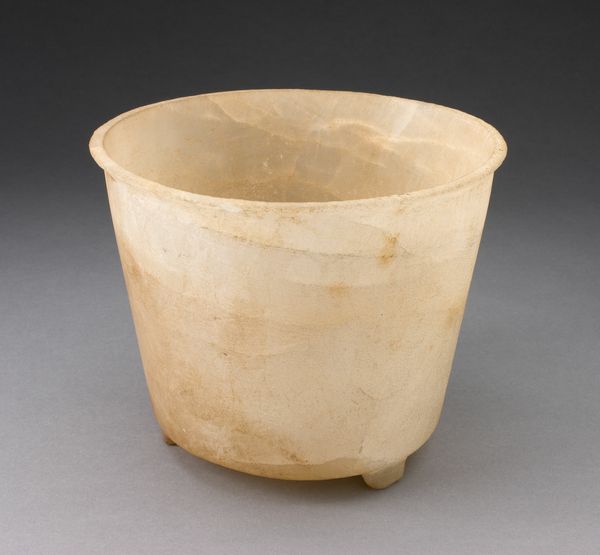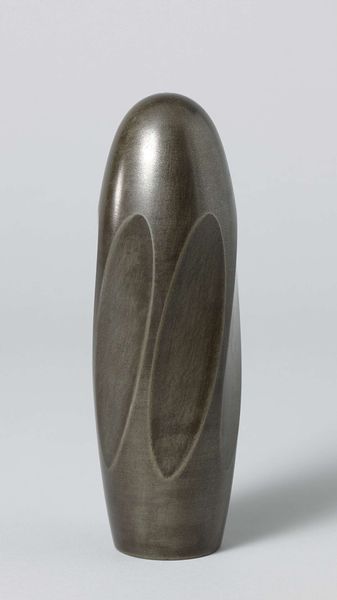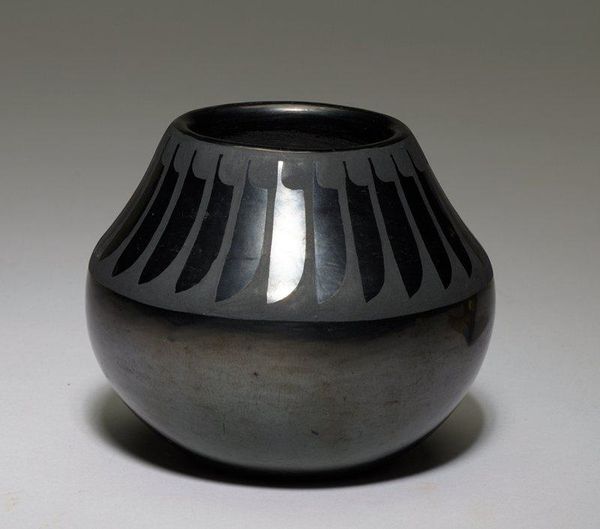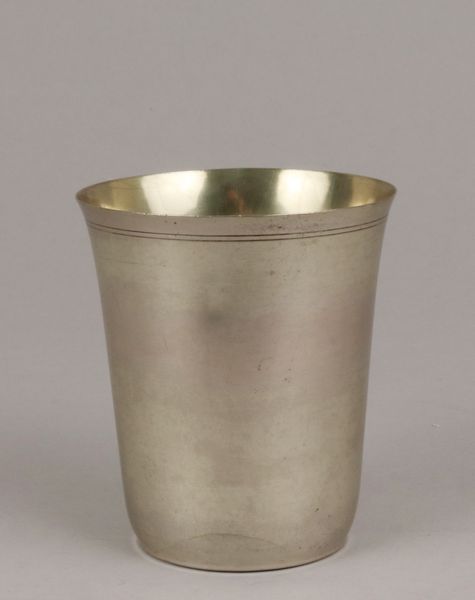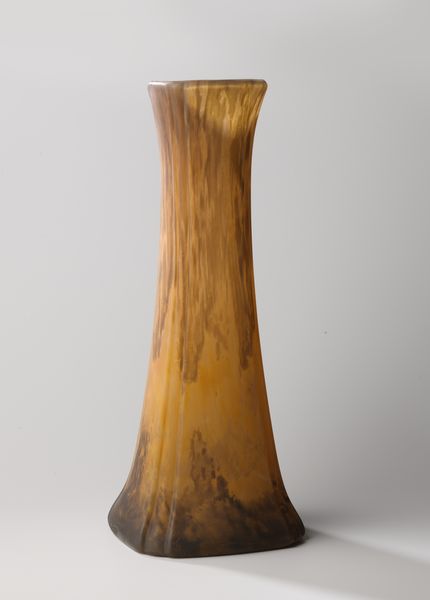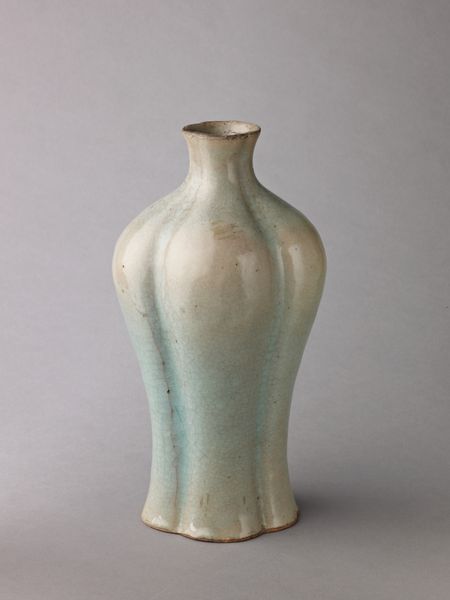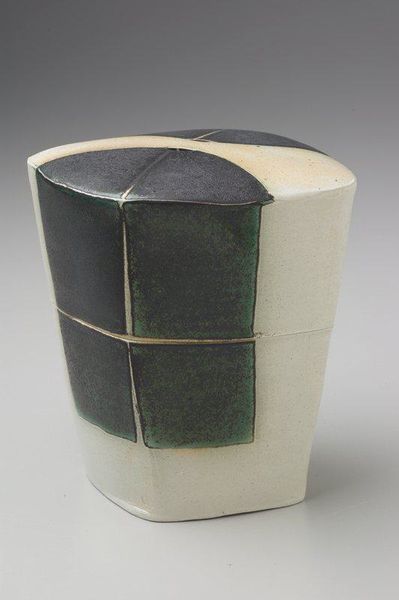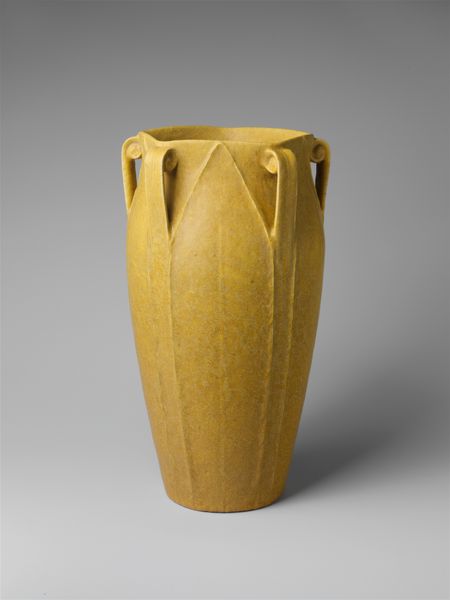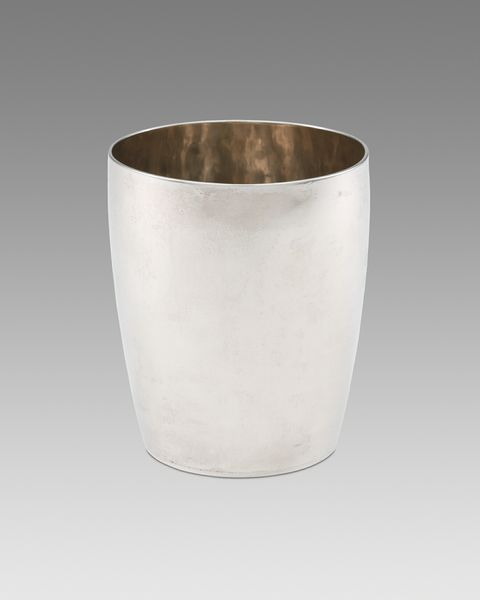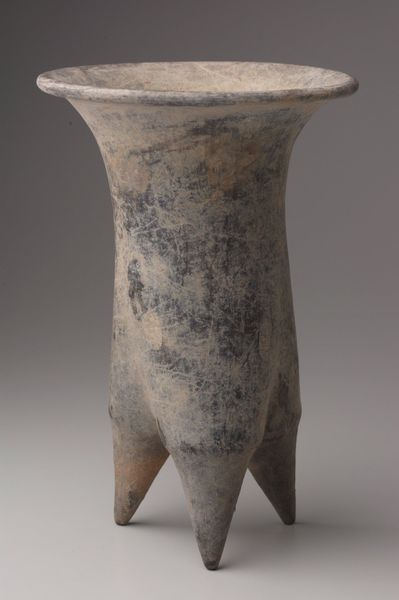
metal
#
art-deco
#
metal
#
vase
Dimensions: 7 3/8 x 5in. (18.7 x 12.7cm)
Copyright: No Known Copyright
Editor: Right in front of us, we have Kay Fisker's metal "Vase," created in 1927. It’s quite striking in its simplicity, almost like a geometric study. What catches your eye most about it? Curator: It’s precisely that simplicity. What kind of labour went into creating these sharply defined geometric planes using metal? The cold, hard metal, is manipulated to reference and subvert ideas related to high craft, design and consumption. I wonder, what does its industrial aesthetic tell us about its intended function? Editor: Functionality? Well, it’s a vase… isn’t its function to hold flowers? Or are you thinking of functionality in a different sense? Curator: Beyond its primary use, let's consider its place in society. The materials, the production process. Art Deco wasn’t just about aesthetics. What type of consumer was interested in something like this? Did it democratize high design, or did it represent luxury only for a privileged group? Editor: I see what you’re saying. Its simplified, almost mass-producible form makes you question its role in consumer culture during the Art Deco movement. Is it celebrating industry or critiquing it? Curator: Exactly! Its very materiality becomes a vehicle for considering class, production and, therefore, consumption, even today. Editor: I never considered a vase could have so much to say about production! Thanks to your materialist approach, I see it with totally new eyes. Curator: My pleasure. Now when you look at other artworks, consider its origin and production through labour to better unpack what it “means.”
Comments
minneapolisinstituteofart almost 2 years ago
⋮
Kay Fisker was an early proponent of functionalism (the Nordic term for International Style), breaking with the neo-classical tradition of the early 20th century. As a young architect he worked with famous Swedish functionalists Sigurd Lewerentz and Gunnar Asplund, and went on to become one of the leading figures in Danish architecture, responsible for the Danish pavilion at the World Exhibition in Paris in 1925. As a designer for A. Michelsen, his committment to the modern aesthetic was a renewal for Danish silver. While many of his works in silver retain decorative curves, this piece in particular captures the stylstic vocabulary he developed concurrently as an architect, which emphasized clean lines and a lack of embellishment. The geometric shape with flat planar surfaces, balanced proportions, and sharp finishing conveys the sense of restrained elegance at the heart of functionalist design.
Join the conversation
Join millions of artists and users on Artera today and experience the ultimate creative platform.


